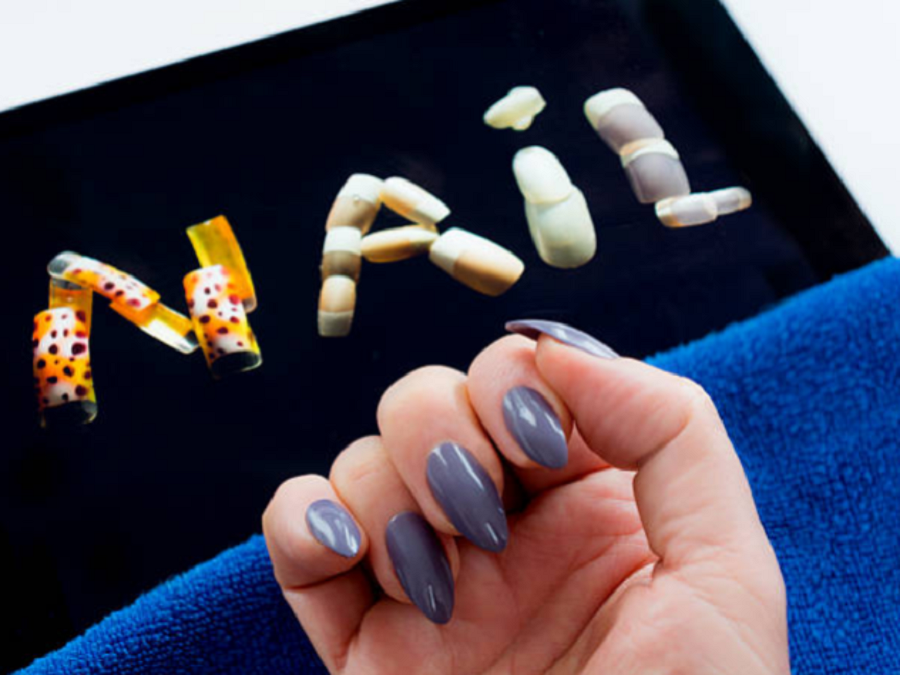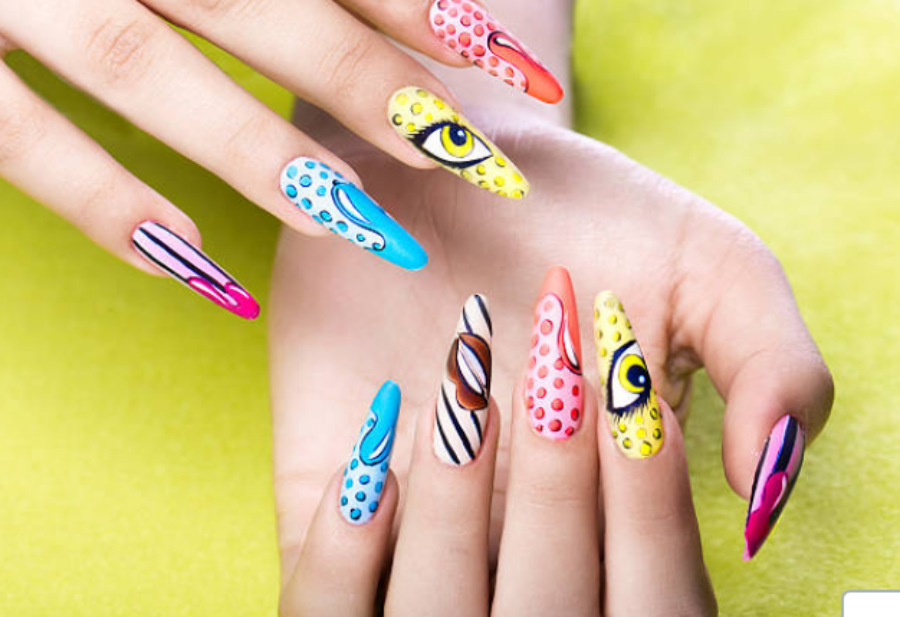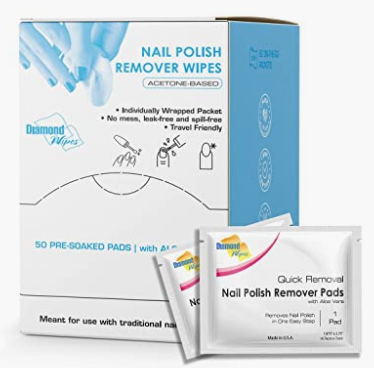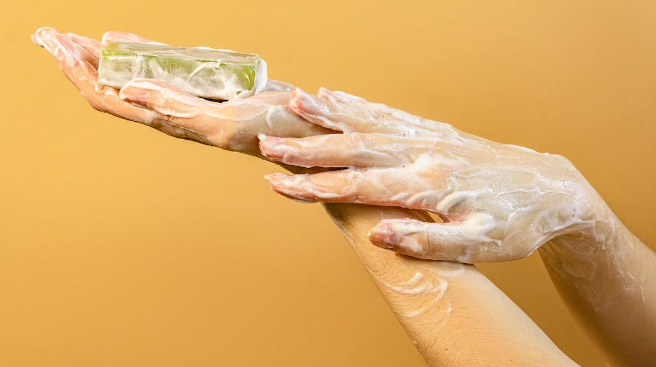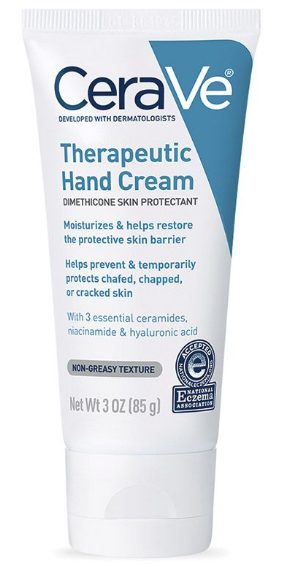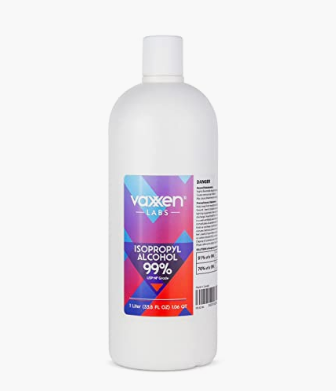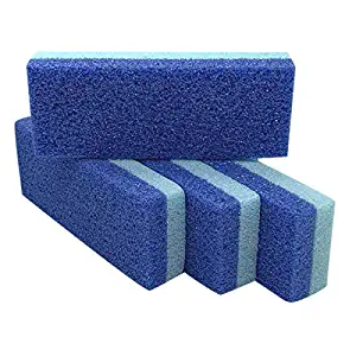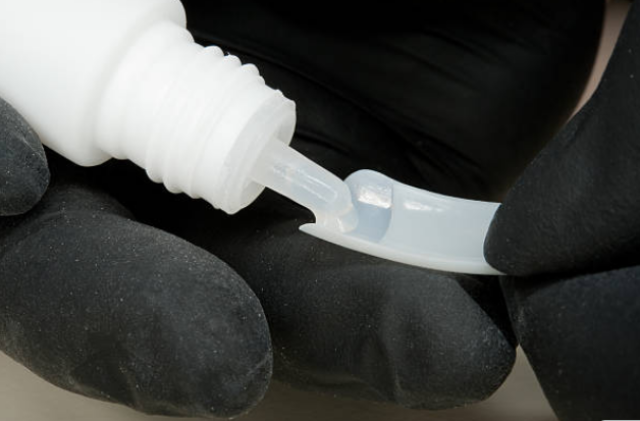If you have ever touched or used nail glue, you may have wondered how to remove nail glue from your skin. Get ready to find out all you need to know.
Nail glue is made up of a composition of ingredients that make it possible for beautiful faux nails to adhere to real nails. Using nail glue can be risky. One of the drawbacks is dealing with accidents like smearing nail glue on your skin.
If it touches your skin, it may irritate you, and you might even glue your fingers together. Removing nail glue from your skin can be a tricky business. This article will show you how to remove nail glue easily and safely.
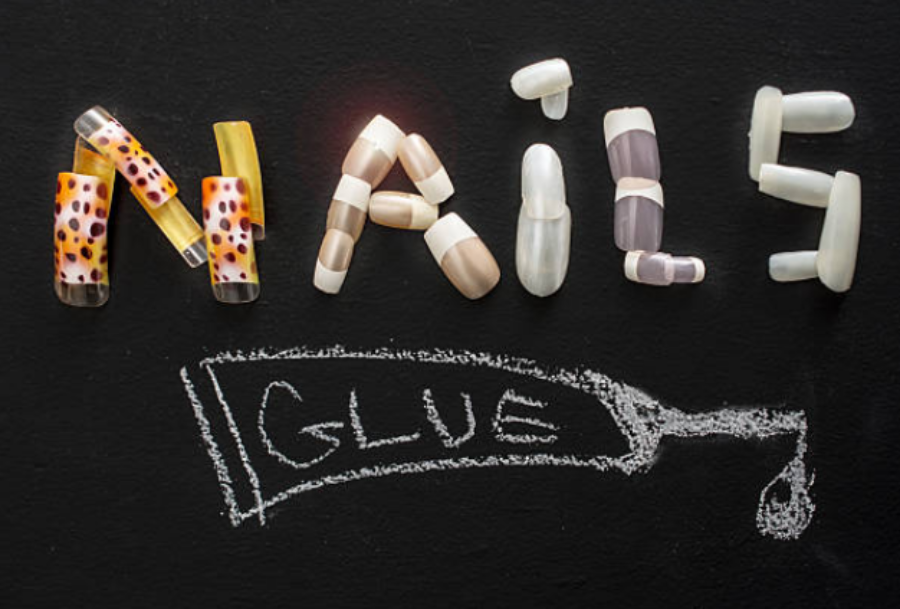
What is Nail Glue?
Nail glue is a product used to add faux extensions to the real nail. It contains a substance called cyanoacrylate. Cyanoacrylate is an adhesive that dries and solidifies when exposed to moisture. This adhesive also serves as the primary component in superglue.
Nail glue also has the potential to make quick repairs to your nails. It typically comes in a squeeze tube, brush-on, or dropper tube.
What is So Special About Nail Glue Than Other Glues?
We’ve experimented with many types of glue for crafts and to mend a few broken mugs, but what sets nail glue apart from the rest of it?
“In terms of chemical structure, nail glue resembles superglue more so than the glues we used in arts and crafts class,” claims Healthline.
Both super glue and nail glue contain a substance called cyanoacrylate (as mentioned above), which assists the quick-dry action of these products and enables them to be completely clear in color, despite the fact that they can differ somewhat in viscosity and intensity.
Long chains of cyanoacrylate molecules form and immediately harden to form a strong plastic mesh. Cyanoacrylate is mixed with other substances to increase its viscosity and make it slide like a gel, making it easier to handle.
We could as well use regular craft glue or compounds resembling epoxy for our nails. But the issue here is that, they are not designed to adhere to the cells found in human nails and because of this, they will quickly come off.
Even though some resourceful nail artists might figure out a way of using two-sided tape or even adhesive strips to get the same result as nail glue, there really isn’t much difference in the chemicals at play.
However, not every nail glue is made equal, so you should carefully read the labels before deciding to purchase an entire bottle.
Some glues are hypoallergenic (better for the skin), while others may be vegan. However, you will always find glue that suits your needs based on your individual choices and priorities.
We’ve come to the conclusion that to maintain the health of natural nails, it’s usually advisable to only apply a tiny amount of (excellent) nail glue and treat the removal procedure carefully.
Image Source: Unsplash
What Causes Nail Glue to Stick to Skin?
When applying false nails, one can easily get nail glue on the skin. Excessive adhesive applied to the nail can seep out to the corners and attach to the skin.
It might be difficult to remove nail glue because of the components that give it strength and endurance.
Learn More!
How to Remove Nail Glue from Skin
Here are some of the finest methods for getting nail adhesive off your skin.
Onyx Professional 100% Acetone Nail Polish Remover
Nail Polish Remover
This method will require the following tools:
- Toothbrush
- Nail polish remover
- Cotton wool
The method:
- To most effectively dissolve the glue, use a nail polish remover that contains acetone.
- The next step would be to thoroughly wet the cotton swab with acetone.
- After that is done, apply it to the damaged region. Feel free to reapply more acetone as necessary and let it soak up the acetone.
- Repeat these steps until the glue begins to disintegrate. Use the toothbrush to buff away the adhesive.
The skin can become excessively dry after contact with acetone. It is advisable to use a hand cream afterward to replenish your skin’s hydration.
Petroleum Jelly
This method will require the following tools:
- Petroleum jelly
- Soap – (Any mild detergent, shower gel, or even hand soap will do)
- Water
The method
- Apply liberal amounts of petroleum jelly there and gently rub it in with your fingertips in a circular manner. The region should be massaged repeatedly until the glue begins to come away.
- Once it has completely loosened, cleanse the affected area in soapy water to remove any leftover adhesive.
Soap and water
This method will require the following tools:
- Soap – (Any mild detergent, shower gel, or even hand soap will do)
- Water
The method:
- Fill a bowl halfway with warm, soapy water.
- Dip your hands in it till the adhesive weakens and dissolves.
- Monitor the process and carefully rub the leftover adhesive off when you notice the glue lifting.
Hand Lotion
This method will require the following tools:
- Hand lotion
- Soap – (Any mild detergent, shower gel, or even hand soap will do)
- Water
The method
- Apply hand lotion to the adhesive at the affected area and massage it in. The adhesive will start to pill off if you keep doing it.
- After the adhesive has been peeled off, Use soap and water and gently wash your hands to get rid of any remaining glue.
When the adhesive is completely removed, moisturize with hand cream. This will hydrate your skin’s aftercare components and aid in moisture retention.
Recommended hand lotion
CeraVe Therapeutic Hand Cream
Salt
Just salt and water are required for this method. The regular salt will work nicely.
The method
- You must make a thick mixture for this to be effective. You do this by combining salt and water.
- The next step will be to use this paste to rub your skin for about 30 to 60 seconds.
- Rub the salt until the adhesive disintegrates. Any remnants of adhesive will be swiftly eliminated by the salt’s rapid dissolution.
“If you have delicate skin, stay away from this procedure because the salt may scratch and dry out your skin”
Rubbing Alcohol
This technique can be damaging to your natural nails. This is because these chemicals have a tendency to dry out your cuticles and nail bed.
This method will require the following tools:
- Rubbing alcohol
- Cotton wool
- Toothbrush
- Tape
The steps:
- Immerse the concerned area in warm, soapy water to soften the skin.
- Put cotton wool over the affected area and tape it so the cotton wool stays.
- Put the affected area in a container of rubbing alcohol for a minimum of 15 minutes.
- Carefully lift the tape off.
- Clean the area of any remaining adhesive. Do this by dipping your toothbrush into alcohol and using the toothbrush to scrape away the leftover glue.
- Finally, use soapy water to clean the spot.
Recommended Rubbing Alcohol
Isopropyl Alcohol (99% ethanol content)
Pumice Stone
This method will require the following tools:
- Pumice stone
- Water
- Soap – (Any mild detergent, shower gel, or even hand soap will do)
The steps:
- Immerse the affected region in warm, soapy water.
- Dip the pumice stone in warm water and rub the affected area circularly.
Recommended Pumice Stone
Double-sided Pumice Stone (100% Siliglass)
Read More!
How to Remove Nail Glue from Press-on Nails
Using press-on nails is a straightforward method to achieve a professional-looking manicure. The main drawback is that taking press-on nails off might be difficult.
Here are some tried-and-tested methods to make it easy.
This will require the following tools:
- Acetone nail polish remover – (I recommend using the Onyx Professional 100% Acetone Nail Polish Remover)
- Baby oil – (The Johnson’s Creamy Baby Oil will do just fine)
- Cuticle oil – (A great one to try is Essie Apricot Cuticle Oil)
- Orangewood stick.
- Buffer
The method:
- To avoid drying out your skin, dissolve your acetone nail polish remover with baby oil.
- The next step is to dip your fingers in the mixture for up to 5 minutes.
- Allow a few drops of cuticle oil to seep into the areas below the press-on nails to help remove the nails and nurture your nail beds.
- Inspect the nails to determine whether they are slack enough to pill off after a few minutes. To rehydrate and revive your cuticles, use Essie Apricot Cuticle Oil.
- Steer clear of pulling the nails out prematurely. If you notice a slight separation between the press-on and your nail bed, it’s time to take them off.
- To remove the press-on nails, carefully go around the cuticles back with an orangewood stick.
- After removing the press-on nails, carefully scrape off any remaining adhesive with an orangewood stick and wipe up any residue with a cotton ball dipped in nail polish remover.
- After removing your press-on nails, try to push your cuticles and delicately buff the nail with a 240-grit buffer. Add your preferred natural oil to a decent hand mask, so it may soak in completely.
I suggest using Epielle Intensive Repairing Hand Mask. It includes a serum with hyaluronic acid and coconut oil to hydrate achy hands.
How to Avoid Getting Nail Glue on Your Skin
Applying artificial nails requires precision and method, so take care to avoid mistakes. To make room, always push your cuticles back.
Because nail glue is so powerful, a little bit will do the trick. There are several other types of nail glue with brush applicators. These nail brushes reduce the likelihood that any excess glue will leak.
What is the Best Nail Glue Remover Aftercare?
After removing nail glue, you may experience some redness and irritation. This is normal, but it can last for a few hours. If it lasts longer, take an over-the-counter pain reliever or ice pack to alleviate the pain.
Slather your hands with a ceramide-rich, heavy-duty moisturizer. Before applying your hand lotion, give your cuticles a quick coat of cuticle oil like Essie Apricot Cuticle Oil, and keep doing so throughout the day.
If you have any open wounds on your fingers or toes, then treat them as if they were broken. You can use over-the-counter ointments such as hydrocortisone cream or calamine lotion. These products may sting a little when applied, but they help relieve the itching and swelling caused by the glue.
Wash your hands thoroughly with soap and water after removing the glue from them. If you’re still uncomfortable after washing your hands, then use an alcohol-based hand sanitizer to cleanse them thoroughly before applying any other treatments.
Before you apply another set of press-on nails, I advise waiting at least a few days. This is to allow your nail beds to properly renew.
Best Nail Application Process for Easy Remover
- Before using adhesive, ensure that all oils are eliminated and that your nails are clean, polished, and just a little bit dried out.
- Prepare your press-on nails and decide in advance which shells will go on which nail. Spend some time sorting them so that you don’t become confused.
- Before pressing on the nails, avoid applying nail adhesive to all of your fingers. Because the adhesive dries quickly, it is best to apply each one at a time.
- Apply a very thin layer of glue to the nail with the brush you have available. Try to be extremely gentle to prevent getting any adhesive on the cuticle.
- To secure a firm hold, go through the application process as usual.
Precautions and Warnings When Removing Nail Glue Off Skin
Is nail glue on the skin dangerous? Using nail adhesive can be risky. It might irritate your skin and burn you chemically if it gets on you. You could also glue your fingers together if you’re not very careful.
If you would like to know how to remove nail glue without removing nails or breaking the skin, my best tip is to avoid pulling or yanking at the skin or nail when removing the adhesive. The cuticle or even the skin may tear if you pull too hard.
Never remove nail glue with sharp tools such as razors, nail files, blades, or knives. If you have sensitive skin or a lot of adhesives on your hands, it is not advised to peel off the skin.
Slowly remove the dried glue from the edges by using tweezers or your fingertips. Rub the edge with a nail file or buffer to make it more pliable if you are unable to grasp it.
Use acetone-free products to remove nail adhesive from surfaces other than lips, eyes, and eyelids. If nail glue gets on these regions, take a warm bath and visit a doctor.
Frequently Asked Questions
How do you dissolve nail glue quickly?
A quick way to dissolve nail glue is to dip it in acetone. This is because dried cyanoacrylate (the main component of nail glue) can be broken down by acetone.
How long does it take for nail glue to pill off the skin?
If you are wondering how long it will take for the nail glue to pill off, note that it can take anywhere between 10 and 40 minutes to remove the adhesive from your skin. It heavily depends on which technique you employ.
Can I remove nail glue with vinegar?
Yes, you can remove nail glue with vinegar. Due to its acidic nature, vinegar can weaken and dissolve nail glue. Dunk a cotton ball in a solution of water and white vinegar. When the glue begins to weaken, brush it with a cotton ball. Finally, you can remove any remaining nail glue with a nail file.
Over to You
As you can see, there are many easy ways to remove nail glue from the skin. Using the right removal technique can make all the difference when it comes to getting rid of excess glue from your skin. It might be difficult for a beginner, but with proper care, you will learn how to do this easily. You may be surprised at how quickly they work without causing damage to your skin.
Conclusion
The best way to remove nail glue from the skin is to use acetone. If you ever accidentally get this on your skin, make sure you have some acetone to take it off. If you don’t have any or you find yourself in a tight spot and can’t get some, baby oil is your next best bet. Be sure to stock these products before you use nail glue. I suggest trying as many techniques on how to remove nail glue from the skin and see what works best.
Although nail adhesive is not harmful in and of itself, improper application or overuse may cause mild skin irritation!
You can also check out this article on How to Look 10 Years Younger Than Your Age Naturally!

